The Pasture Mealybug: A New Invasive Pest of Pastures and Hayfields in Texas
Authors: Stephen Biles1, Danielle Sekula1, José Santiago-González2, Caixing Xiong3 and David Kerns4
Background
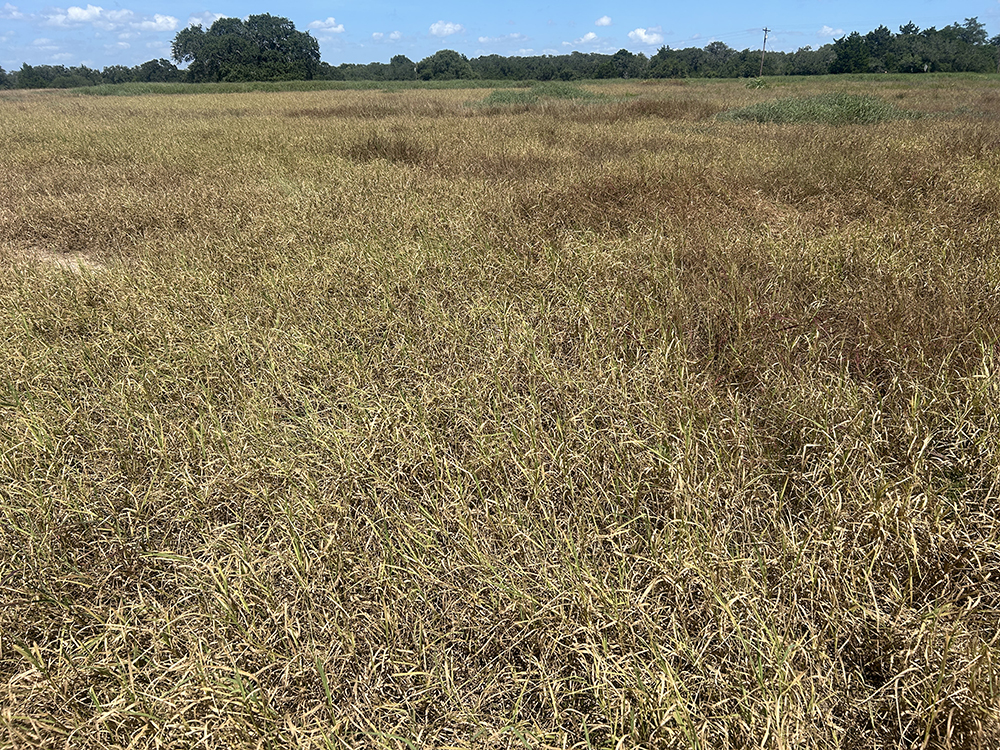
Since mid-April of the current season, southern Texas pasture and hay producers have been reporting problems in their fields. These fields show grass patches becoming brown or necrotic, or patches that are completely dead. There have been extreme cases where entire fields show symptoms of grass desiccation (Figure 1). Originally, it was presumed that symptoms were caused by the Rhodes grass mealybug (Antonina graminis), which has been reported in the U.S. since 1942. However, further investigations have confirmed the pasture mealybug (Heliococcus summervillei) is the species associated with the symptoms and cases previously mentioned.
This insect is an introduced pest and a newly recorded species in the United States. Although it is a new record for the continent, researchers suspect that the insect may have been introduced before 2022. This pest was first described in Australia in 1928, and the first detection of this species in the Western Hemisphere occurred in the Caribbean between 2019 and 2020.
Current season infestation
During the current season, the pest has been found in the following Texas counties. The range of the infestation is probably greater (Fig. 2).
- Austin
- Brazoria
- Brazos
- Burleson
- Calhoun
- Cameron
- Colorado
- DeWitt
- Fayette
- Fort Bend
- Galveston
- Goliad
- Hidalgo
- Jackson
- Lavaca
- Matagorda
- Refugio
- Robertson
- Victoria
- Washington
- Wharton
- Willacy
Figure 2. Texas counties with known infestations of pasture mealybug during the current season.
Identification and Biology
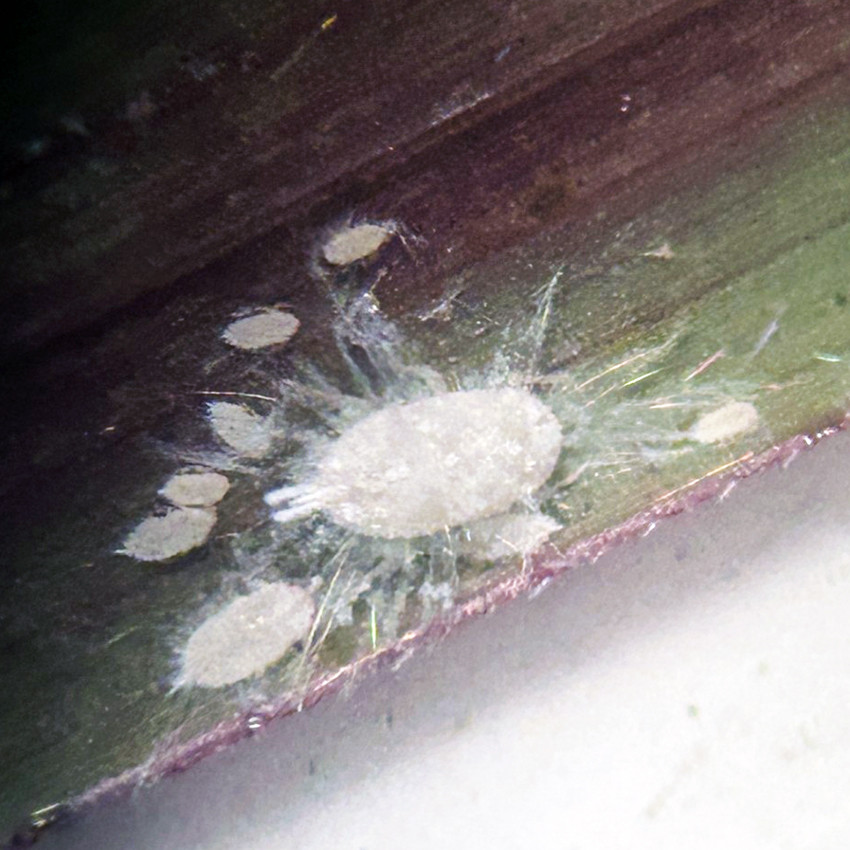
Adult female mealybugs are 2 to 5 millimeters (mm) long and oval with a posterior, short anal tube. The insect body is usually covered with a waxy coat, giving it a white or “mealy” appearance. Older pasture mealybugs have fine hair, about the length of the width of their bodies. These extend out to all sides (Fig. 3).
The youngest nymphs are very small (less than 1 mm in length) and can only be seen with a magnifier. They might be found at the base of the plant and roots on feeding sites. Nymphs are the damaging stage of the pest. The adults do not feed. The pasture mealybug is mobile in all life stages and might be found at or below the soil surface or under dried cow patties (Fig. 4). Pasture mealybugs are not necessarily gregarious and may be found either in larger groups or individually on leaves.
The pasture mealybug reproduces sexually, with both males and females passing through four instars. Males pupate after the third instar and emerge as winged adults, which are most abundant during the peak summer breeding season. Mating tends to occur in the dense thatch layer of summer pastures. The bodies of mature mated females turn pink in color. Females can produce nearly 100 offspring within 24 hours.
Under laboratory conditions, the average life cycle of females is 45 to 47 days, though some may live up to 100 days. Males have a shorter life cycle of 29 to 33 days. Females can persist in the field year-long by overwintering in the soil, where they survive under dry and/or cold temperatures.
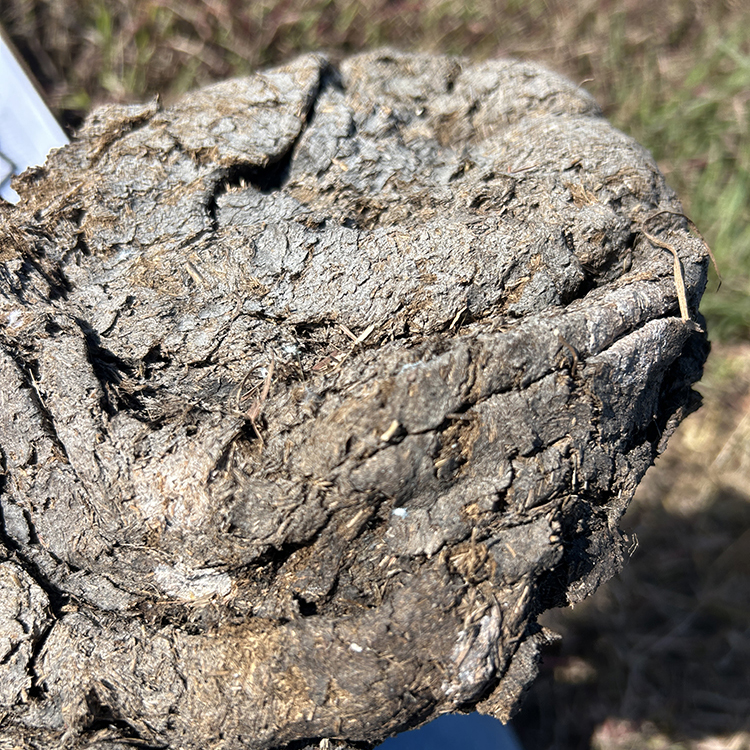
The pasture mealybug undergoes seasonal variations in intensity or population increases, depending on the weather and pasture management. It has been noted that high humidity, high temperatures, and rain events over the growing season are favorable conditions for the pest to increase in population size and damage potential.
Damage and Symptoms
While adult pasture mealybugs do not feed, immature pasture mealybugs feed by sucking plant sap with piercing/sucking mouthparts and excrete sugary substances called honeydew, over the leaves. This substance promotes the growth of sooty-mold fungi, which blocks photosynthesis. Most of the damage to the grass is caused by the saliva injected into the plant, which is toxic to the grass (Fig. 5). As a result, the plants become weakened and more susceptible to secondary infections by plant pathogens such as Fusarium. The combination of the mealybug feeding and secondary infection of plant pathogens results in a condition known as “pasture dieback,” which kills grasses and is currently affecting millions of hectares of highly productive grazing land across parts of Australia. Even low numbers of mealybugs may result in pasture dieback under the right conditions.
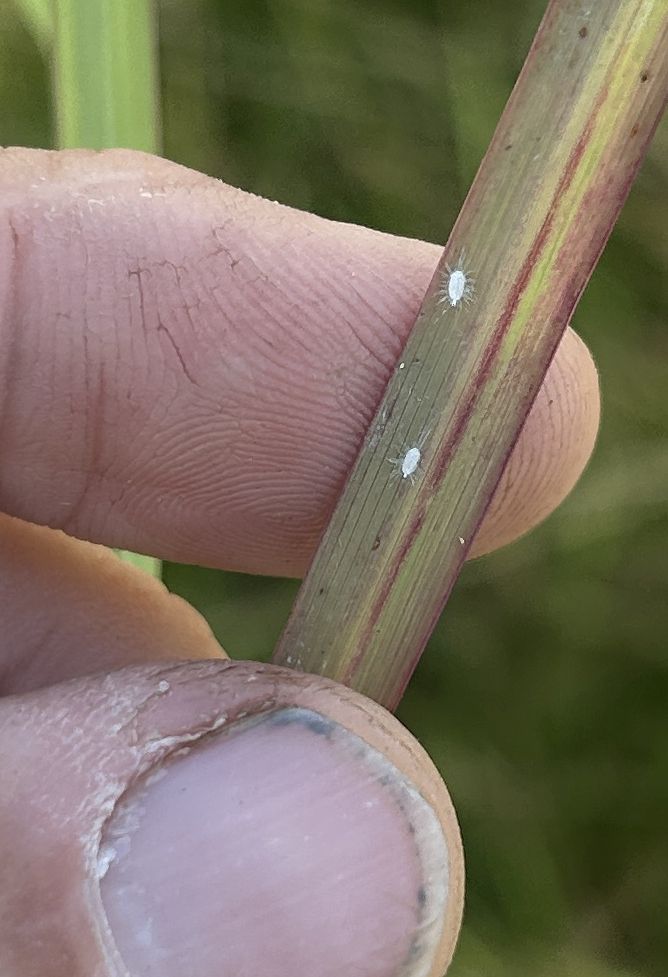
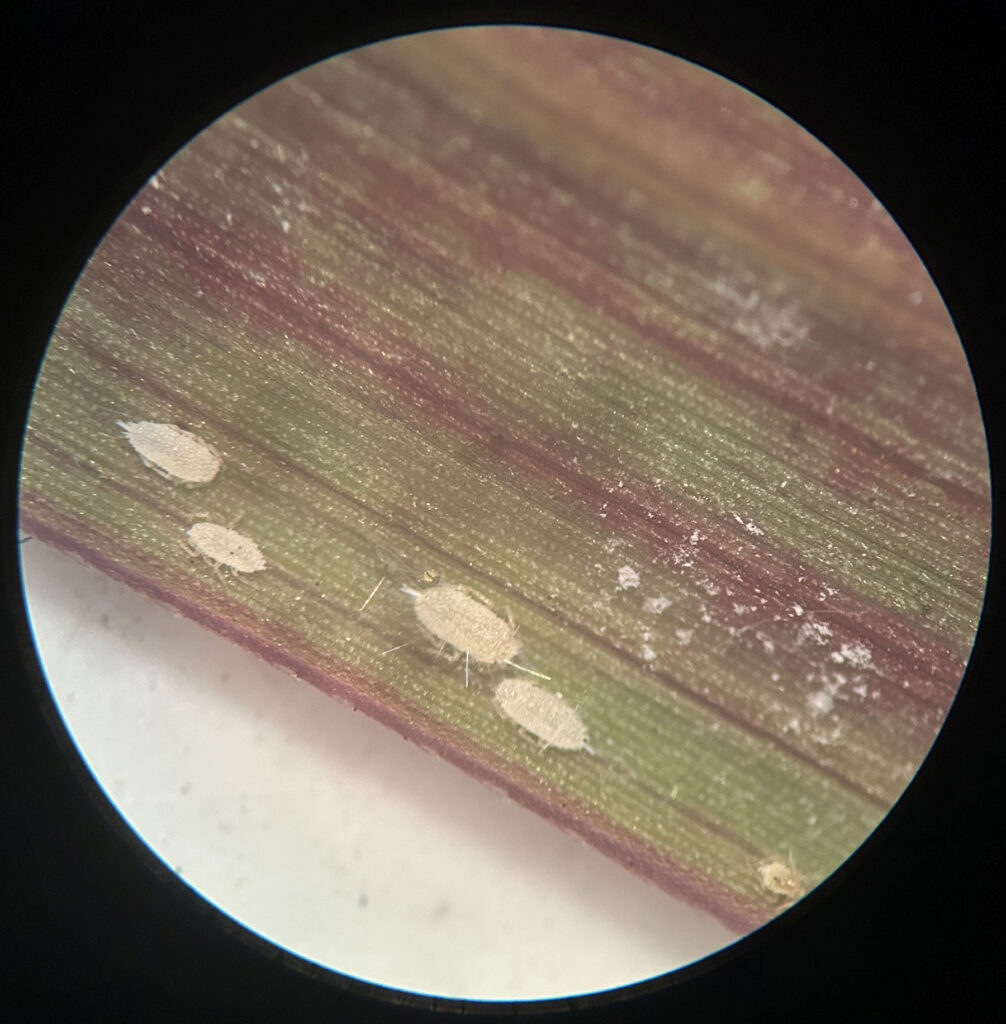
Mealybug symptoms can appear within a week of infestation, but it may take longer for the grass to die. The early plant symptomology of grass affected by mealybug feeding is yellowing and discoloration, followed by purpling or reddening of the leaves (Fig. 6). Plants may look stunted and show drought stress even after a rainfall event and generally have a poorly developed root system. These symptoms are noted first in old leaves, starting from the tip and moving down the leaf blade in a die-back progression. Plants experiencing dieback will senesce prematurely, leading to infections of opportunistic pathogens that eventually cause the plants to die (Fig. 7).
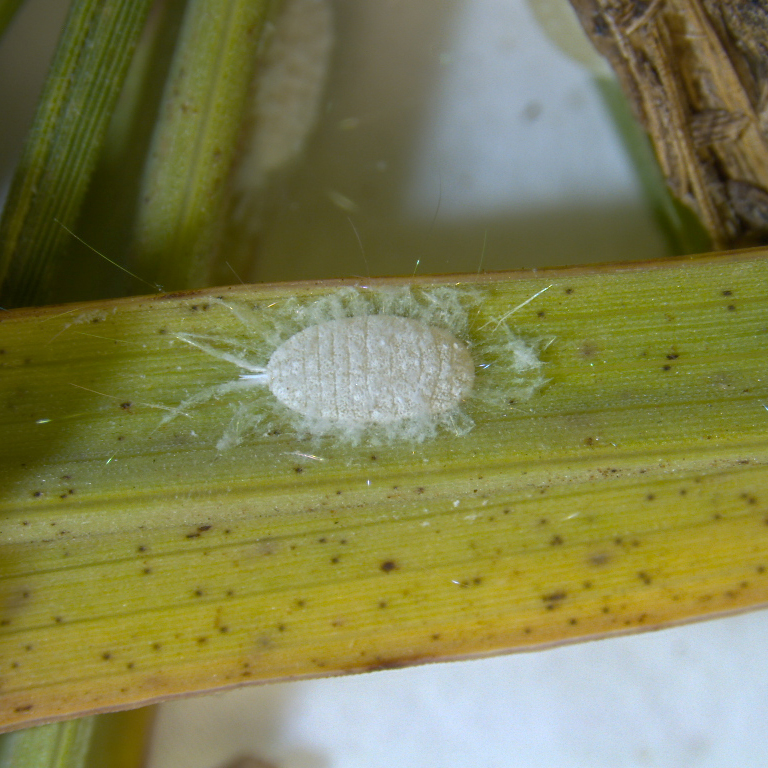
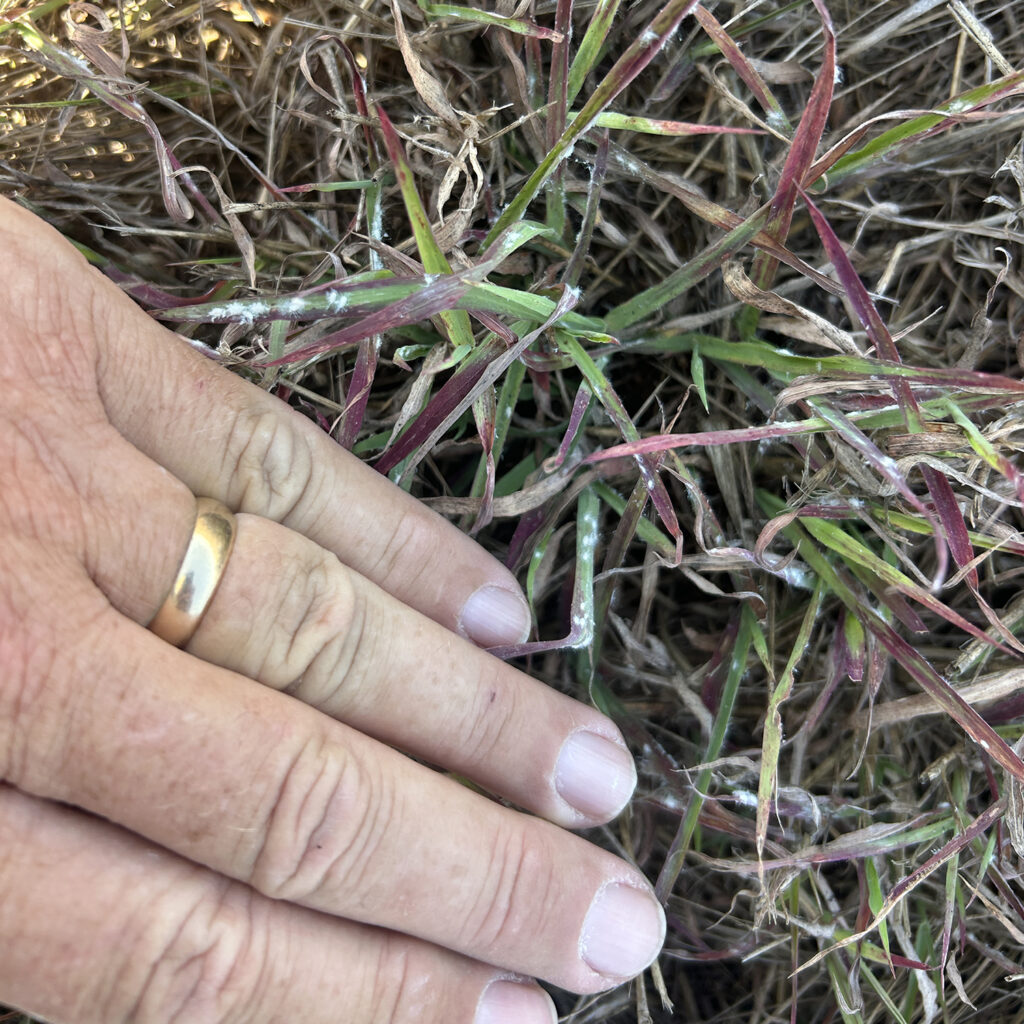
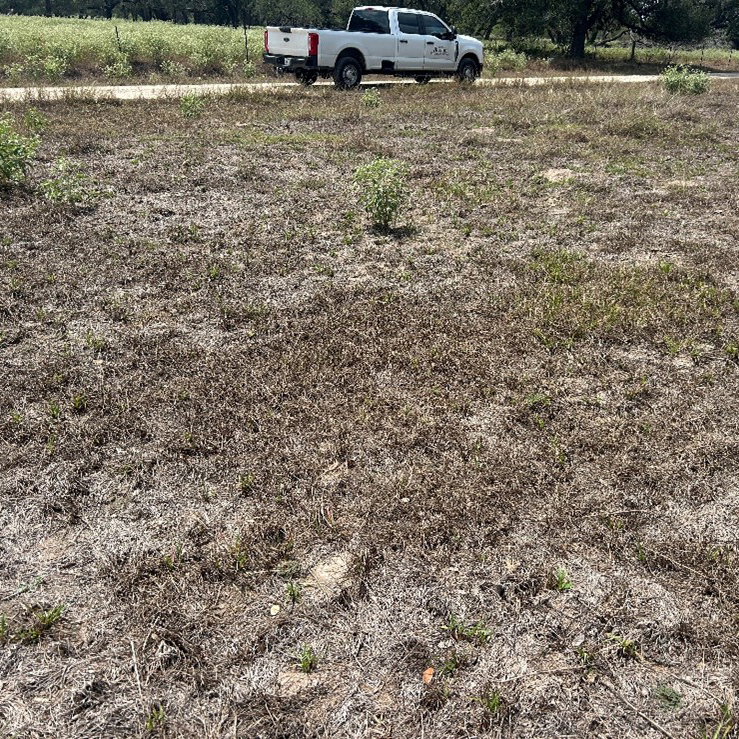
Hosts
Pasture mealybug is a primary pest on tropical and subtropical grasses. However, it has also been noted to infest some sedges. The pest has been reported infesting grasses used for pastures in Australia, rice in India, sugarcane in Pakistan, and turfgrasses in Barbados. Most of its economic impact has been documented in pastures grown for grazing and hay in Australia. Broadleaf plants, such as legumes or brassicas, are not affected by the pasture mealybug. In Texas, it has been noted on and damaging Bermudagrass, Bahia grass, Johnsongrass, hay grazer (sorghum-sudangrass), several bluestem species, and St. Augustine turfgrass (Fig. 8). The host range is probably much broader than listed here.
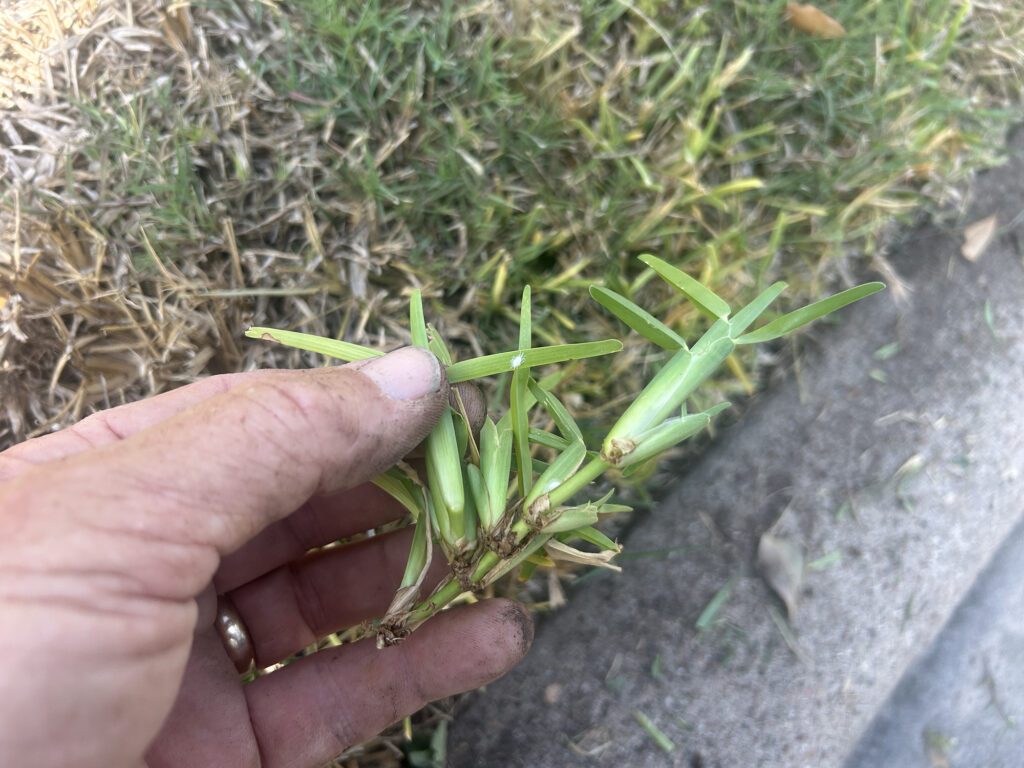
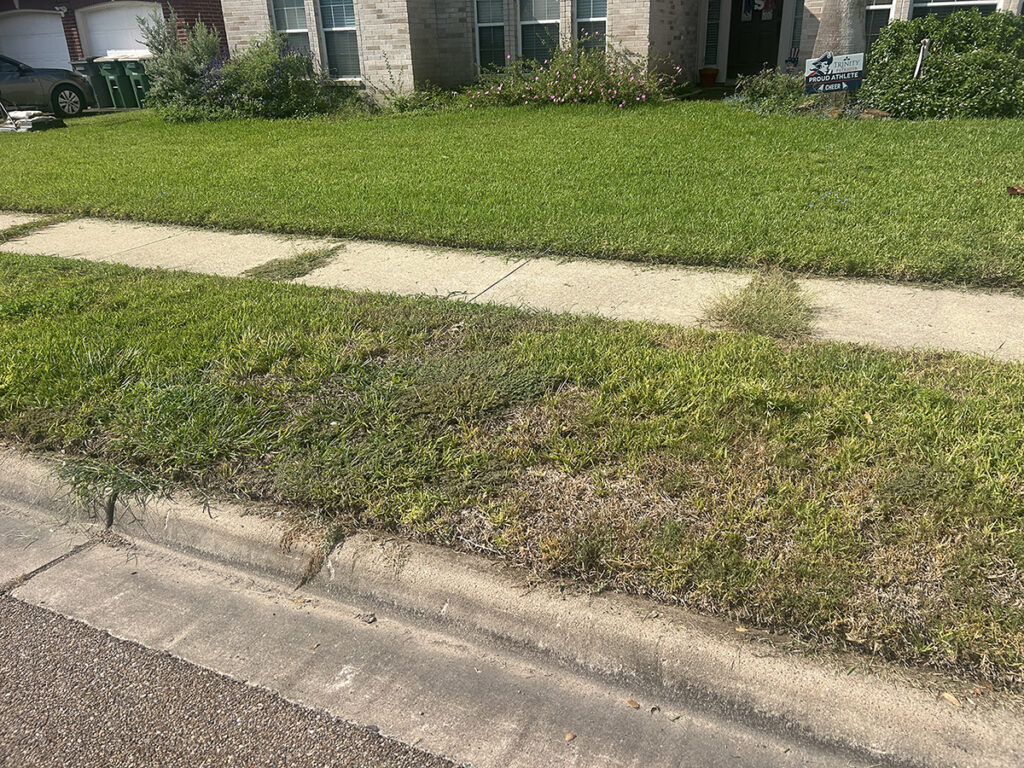
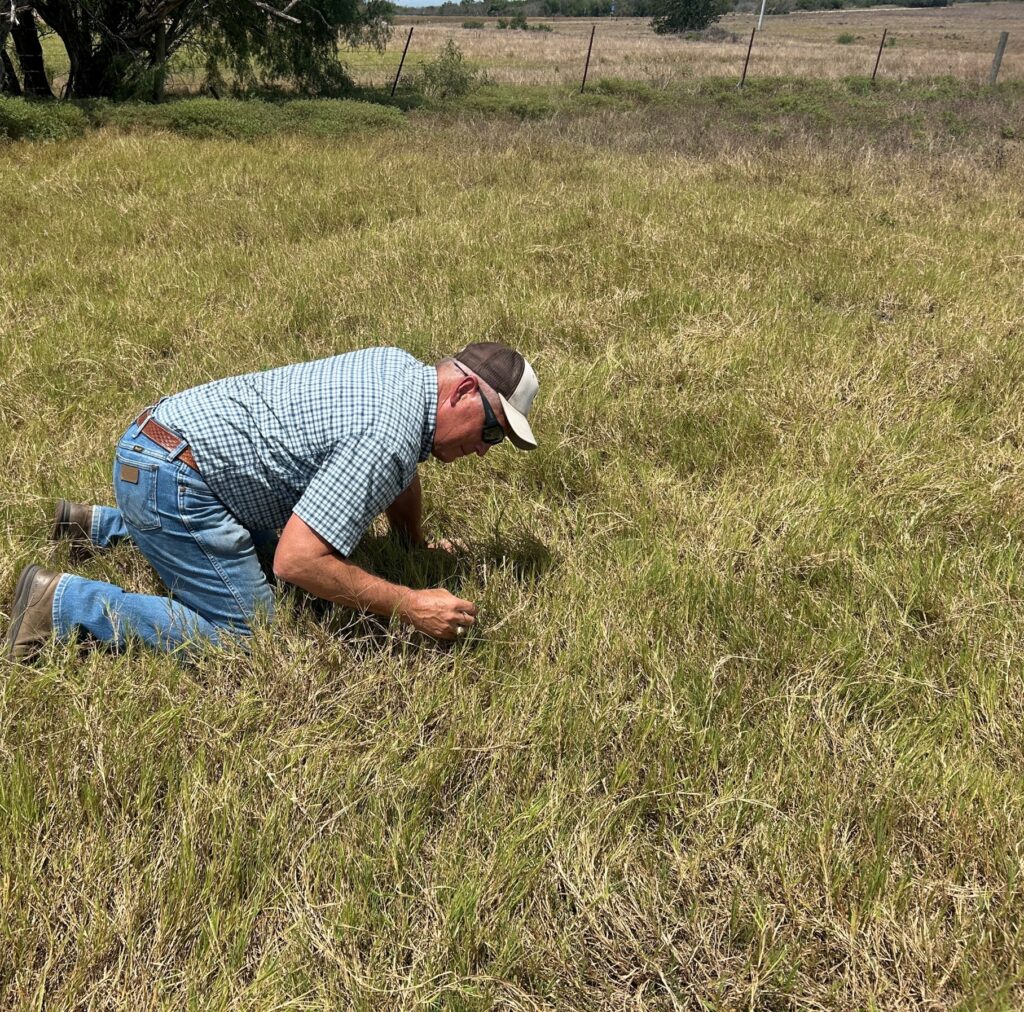
Scouting and Monitoring
Inspect for pasture mealybugs as part of a regular pasture pest scouting program. Currently, there is no standardized protocol to scout for pasture mealybugs. However, the pasture mealybug can be found on grass leaves, at the base of the plants, over the soil, in leaf litter, below the soil, and below cow patties. Closely inspect areas where the grass is yellowed or reddened. Field areas where grass is left unmanaged—like fence lines, ungrazed patches, and roadsides—tend to grow long and thick, making them more vulnerable to mealybug infestations. Inspect the foliage and stems throughout the plant and under the thatch (Fig. 9). Most pasture mealybugs will reside on the grass blades, followed by the stem and roots in the summer. Look for fluffy white, waxy or “fuzzy” insects. There are other insects that produce white, waxy, coverings, but if infested plants appear unhealthy, the insect is probably the pasture mealybug and further investigation is warranted. Specimens can be collected for species verification by Texas A&M AgriLife Extension Service.
If an infestation is suspected, it is a good idea to mark that location and monitor it for spread and plant health decline.
Management

Currently, there are no reliable and tested management strategies for pasture mealybug in Texas. Most of the little information available is from Australia, which may not translate to Texas production practices. There is a great deal of research that is needed.
Australian researchers are recommending planting grasses that are less susceptible to pasture mealybug. Currently, it is unknown which grasses utilized in Texas may prove to be less susceptible.
Nitrogen fertilization of affected areas has been shown to exacerbate the dieback condition. Thus, avoiding excessive nitrogen fertilization in infested pastures may aid in slowing pasture mealybug population growth. However, in Australia, researchers have observed that phosphorus fertilization may help grass tolerate pasture mealybug better by improving root growth and grass recovery.
Grazing/cutting the pasture has been recommended in cases where the pasture mealybug is established. Grazing or cutting the pasture reduces areas of thick-growing grass, creating unfavorable conditions for the pest to expand. It also enhances nutrient uptake for grass regrowth and helps to improve the tolerance of plants against mealybug feeding. Additionally, in pastures heavily infested with pasture mealybug, it may be advisable to harvest early before the grass dies to preserve hay quality. The direct effect of grazing on reducing pasture mealybug populations is uncertain.
Although pasture mealybug may be dispersed by wind, movement on machinery, cattle, or on clothing from infested pastures to uninfested pastures is a great concern (Fig. 10). It is a good idea to clean farm equipment operating in an infested pasture before operating that machinery in a clean pasture. Pressure washing equipment is the best method, but sweeping equipment is an alternative where washing is not possible.
Over time, pasture mealybugs may be controlled by populations of naturally occurring or introduced beneficial arthropods. It is advisable to avoid using broad-spectrum insecticides, such as pyrethroids, in pastures infested with pasture mealybug. Additionally, fire ants are known to tend and protect many soft-bodied insects, such as mealybugs, from predators and, thus, may exacerbate mealybug infestations.
There are currently no labeled insecticides to specifically control the pasture mealybug. Pyrethroid insecticides are labeled to control different mealybug species in pastures. However, the use of broad-spectrum insecticides like pyrethroids is not recommended. Recent data collected by Texas A&M AgriLife Extension Service suggests pyrethroids are ineffective and may make the mealybug population worse by eliminating natural enemies. Research to identify effective insecticides, their timing, and use is underway.
Reporting Infested Pastures and Turf
It is important to understand the geographic range of the current pasture mealybug infestation. Additionally, scientists are actively searching for locations to conduct research on this pest.
- If pasture mealybugs are found in a pasture, please contact one of the following:
- Stephen Biles, Extension Program Specialist-IPM, Texas A&M AgriLife Extension Service ([email protected])
- Danielle Sekula, Extension Program Specialist-IPM, Texas A&M AgriLife Extension Service ([email protected])
- José Santiago-González, Assistant Professor & Extension Entomologist, Texas A&M AgriLife Extension Service ([email protected])
- David Kerns, Professor & Extension Entomologist, Texas A&M AgriLife Extension Service ([email protected]).
- If pasture mealybugs are found infesting turf, please contact Caixing Xiong, Assistant Research Scientist, Department of Entomology, Texas A&M University ([email protected]).
1Program Specialist -IPM, Department of Entomology, College of Agriculture and Life Sciences, Texas A&M University, Texas A&M AgriLife Extension Service
2Assistant Professor and Extension Entomologist, Department of Entomology, College of Agriculture and Life Sciences, Texas A&M University, Texas A&M AgriLife Extension Service
3Assistant Research Scientist, Department of Entomology, Texas A&M AgriLife Research
4Professor, Extension Entomologist and Associate Department Head, Department of Entomology, College of Agriculture and Life Sciences, Texas A&M University, Texas A&M AgriLife Extension Service
